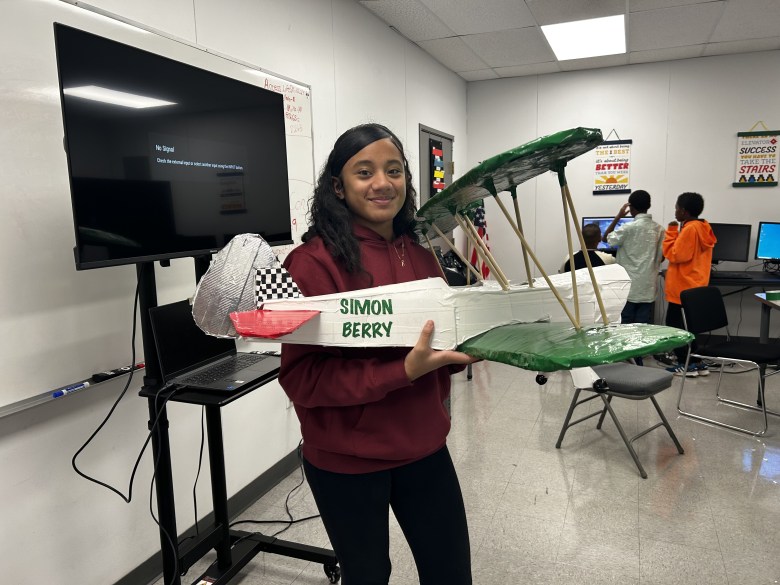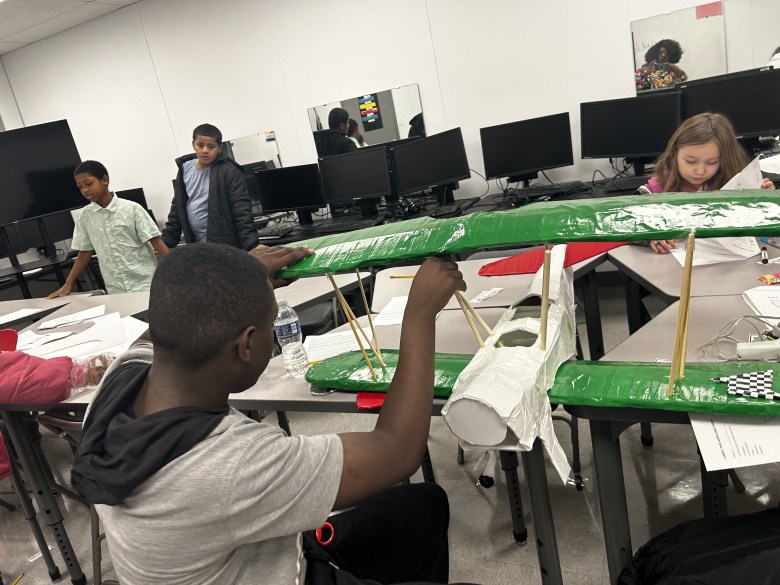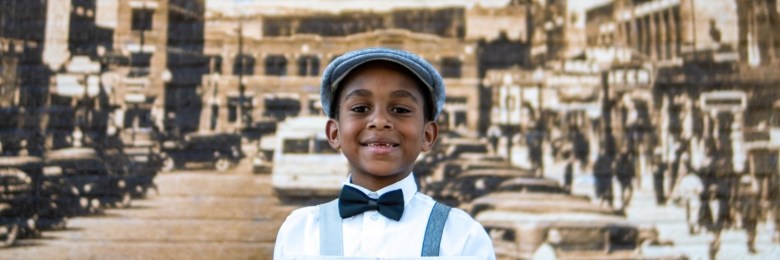LAWTON, Okla.–Just before the start of Black History Month, students in southwest Oklahoma crammed into classrooms to learn more than just the tragedy of the 1921 Tulsa Race Massacre. They experienced an interactive lesson on the ingenuity and entrepreneurial success of Black Wall Street’s most prominent aviator, Simon Berry.
As someone who saw the opportunity in exclusion, Berry started a “jitney” taxi service in 1919 for Black residents of Tulsa barred from using white-only transportation. What started as an informal Uber for the segregated Historic Greenwood District evolved into an auto garage and training for Black mechanics, a bus line and eventually an air charter service.
“I think his story is not being told enough. He was a great asset to Black Wall Street and the field of aviation in the state of Oklahoma,” MacArthur High School science teacher Kimberly Jones told the Black Wall Street Times.

Last year, she worked with middle and high school students to create 3-D models of Greenwood. This year she worked with the Federal Aviation Administration’s (FAA) National Black Coalition of Federal Aviation Employees to teach students about Simon Berry and expose them to careers in aviation.
“Because I tell people, yes, he was here in Oklahoma when the Tulsa tragedy occurred, and he came back,” Jones said.

Who was Simon Berry?
Born on July 6, 1890 in Granada, Mississippi, Berry taught mechanics at a small college in Tennessee before moving to Tulsa as early as 1915.
Inspired by the entrepreneurial spirits at the heart of Black Wall Street, Berry made a home in Greenwood and quickly got to work, according to “The Victory of Greenwood” by Tulsa researcher Carlos Moreno.
“When I worked for the Oklahoma Eagle I was taught about many of the legendary leaders of Greenwood, and one of my very favorites is Simon Berry,” Moreno told the Black Wall Street Times. “Eddie Faye Gates was a history teacher where my daughter goes to school at Edison, and wrote that Berry, ‘grabbed with gusto the golden fleece of opportunity wherever he saw it,'” Moreno said.
Buoyed by his wife and four-year-old son Simon Berry Jr., his makeshift taxi service became the main hub for transporting Black residents across town.
The segregated economics meant Berry was able to expand his services to a reliable community of customers. He used the excess funds to build a mechanic garage on Archer Street, where he began teaching Black men and women how to perform auto repair.
What the City of Tulsa owes Simon Berry
Unlike many Black capitalists today, Berry wasn’t in it only for the money. His jitney cars were used to ferry Black passengers out of danger when the City of Tulsa deputized thousands of white men to burn, bomb, loot and destroy Greenwood.
While his actions during the massacre went undocumented, he returned to Black Wall Street as part of the rebuilding efforts.
A year before the creation of American Airlines in 1926, Berry and his business partner James Lee Northington were already carrying cargo and oil barons of all racial backgrounds through the skies, according to the Oklahoma Historical Society.
His bus line became so popular that after he sold it in the 1940s, the City of Tulsa eventually purchased it as an early version of today’s Tulsa Transit public bus service.
“How inspiring is that? He had a vision to use cars and buses to create better transportation networks, and he did this so well it became the foundation for the entire bus service we use today in Tulsa,” Moreno said.
Inspiring the next generation
As the field of aviation faces uncertainty, with planes falling from the sky, President Trump firing essential aviation safety personnel and a lack of new recruits, many wonder about the future of flying.
Lawton Public Schools Science teacher Kimberly Jones decided to find the solution in the brilliance of Simon Berry’s Black history. With a goal of getting kids interested in STEM education, Jones came up with an innovative project to connect students with the giants who came before them.
“I had read an article about how the FAA was pouring millions of dollars into high schools around the country for kids to start taking courses related to aviation,” Jones told the Black Wall St. Times.
“If students go ninth grade through 12th grade and stay with those courses, they’re able to receive certain certifications in aviation, even a pilot’s license at the age of 16, if they take those courses and pass.”
The state of Oklahoma has a website dedicated to encouraging students to pursue careers in aviation.
“The second largest, most powerful, influential industry in the state of Oklahoma is our aerospace industry,” Oklahoma Lieutenant Governor Matt Pinnell said during a keynote speech in October. “And I would argue that within the next decade it will be the number one industry in our state.”
Ultimately, Simon Berry was an entrepreneur and aviator who flew millionaires on his private planes during a time when few Americans of any background were taking to the skies. His story now inspires a new generation. He gave Black people wings during a time when the dominant society did everything it could to break their spirits.
As the state celebrates historical figures in aviation like Wiley Post and Clyde Cessna, Simon Berry’s legacy soars higher than his ancestors could ever dream.


